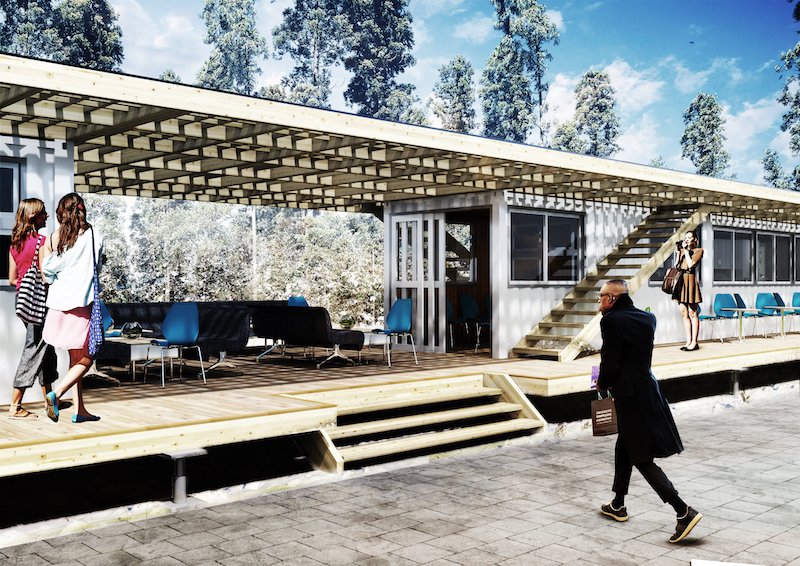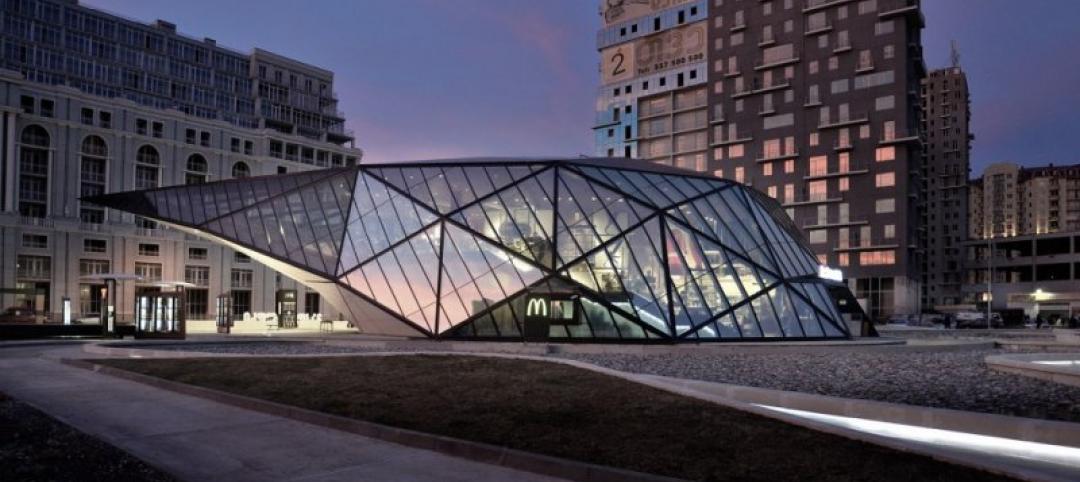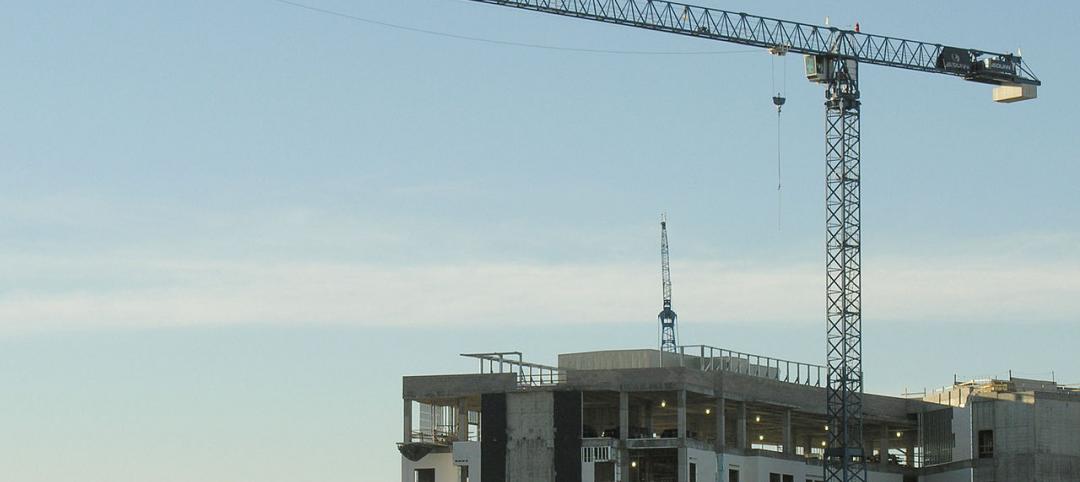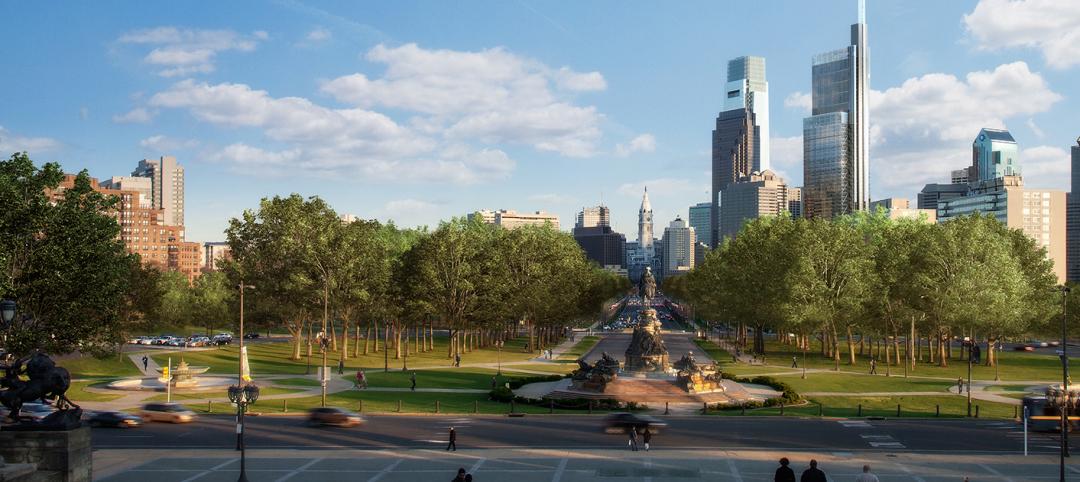Lego Lunch, a planned fast food restaurant for Siauliai, Lithuania, will be built using recycled shipping containers to create a modular and replicable structure. Each module is independent, can be easily reproduced, and has a specific function attached to it, which helps to reduce costs.
The building faces south to take advantage of the natural light and heat provided by the sun. However, because the building is in a cold climate, an LED lighting system and insulation are included in the renovated containers.
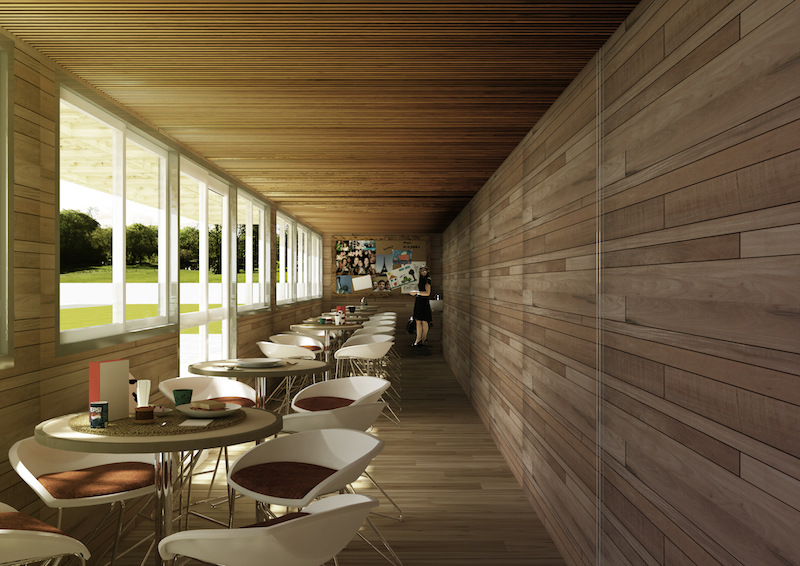 Rendering courtesy of Hermann Kamte & Associates.
Rendering courtesy of Hermann Kamte & Associates.
The containers act as the load-bearing structures but will be highlighted with wood and glass. A wooden trellis is placed on top of all of the containers and creates an awning in a space between two of the containers, under which customers can sit and relax. The stairs and the platforms surrounding the outside of the containers are made of wood and metal. Wood is also used on the interior walls of the containers. Glass windows create a bright, natural-light filled interior with views of the surrounding landscape.
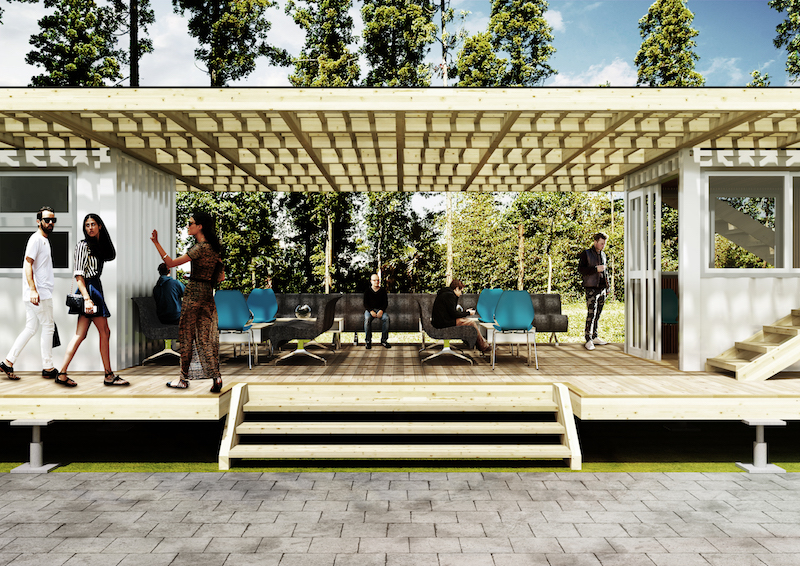 Rendering courtesy of Hermann Kamte & Associates.
Rendering courtesy of Hermann Kamte & Associates.
Hermann Kamte & Associates, the project’s architect, describes the structure as “serviceable, marketable, economical, sustainable, and ecological.”
 Rendering courtesy of Hermann Kamte & Associates.
Rendering courtesy of Hermann Kamte & Associates.
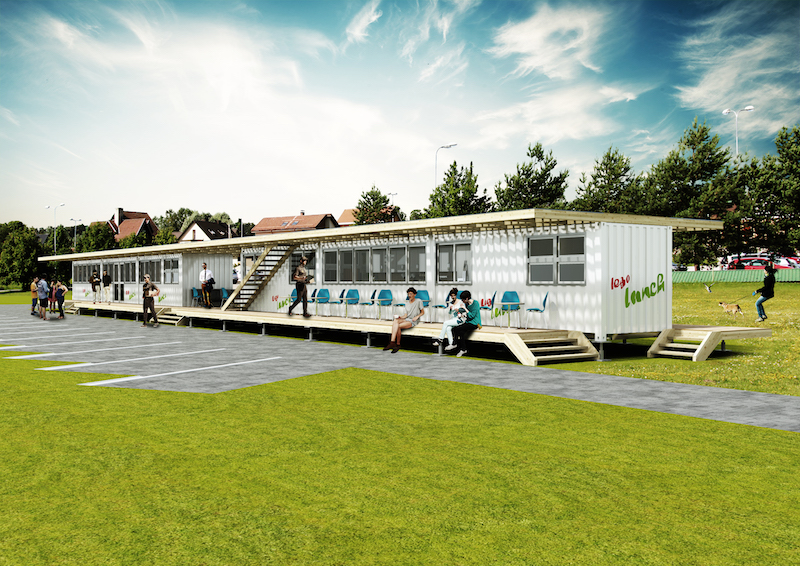 Rendering courtesy of Hermann Kamte & Associates.
Rendering courtesy of Hermann Kamte & Associates.
Related Stories
| Feb 10, 2014
Architecture Design Collaborative announces firm opening in Southern California
Today, Architecture Design Collaborative officially announces the launch of its firm providing a full range of architecture and interior design services nationwide. Architecture Design Collaborative offers architectural design services, comprehensive interior design services, developer collaboration, direct tenant improvement, repositioning and site planning.
| Feb 5, 2014
7 towers that define the 'skinny skyscraper' boom [slideshow]
Recent advancements in structural design, combined with the loosening of density and zoning requirements, has opened the door for the so-called "superslim skyscraper."
| Jan 31, 2014
Ultra-modern McDonald's restaurant voted one of world's best new buildings
This McDonald's, which is combined with a fuel station and recreation areas, was awarded the Best Commercial Building of the Year by architecture website ArchDaily.
| Jan 29, 2014
Richard Meier unveils 'urban courtyard' scheme for Mexico City towers
A grand atrium, reaching some 30 stories, highlights the contemporary, bright-white design scheme unveiled this week by Richard Meier & Partners for a new mixed-use development in Mexico City.
| Jan 29, 2014
Hotel, retail, recreation sectors to lead growth in 2014
AIA's Consensus Construction Forecast, a survey of the nation’s leading construction forecasters, is projecting that spending will see a 5.8% increase in 2014, led by the hotel, retail, and amusement/recreation sectors.
| Jan 28, 2014
2014 predictions for skyscraper construction: More twisting towers, mega-tall projects, and 'superslim' designs
Experts from the Council on Tall Buildings and Urban Habitat release their 2014 construction forecast for the worldwide high-rise industry.
| Jan 28, 2014
16 awe-inspiring interior designs from around the world [slideshow]
The International Interior Design Association released the winners of its 4th Annual Global Excellence Awards. Here's a recap of the winning projects.
| Jan 21, 2014
Comcast to build second Philadelphia skyscraper, with Norman Foster-designed tower [slideshow]
The British architect last week unveiled his scheme for the $1.2 billion, 59-story Comcast Innovation and Technology Center, planned adjacent to the Comcast Center.
| Jan 21, 2014
2013: The year of the super-tall skyscraper
Last year was the second-busiest ever in terms of 200-meter-plus building completions, with 73 towers, according to a report by the Council on Tall Buildings and Urban Habitat.
| Jan 13, 2014
Custom exterior fabricator A. Zahner unveils free façade design software for architects
The web-based tool uses the company's factory floor like "a massive rapid prototype machine,” allowing designers to manipulate designs on the fly based on cost and other factors, according to CEO/President Bill Zahner.


